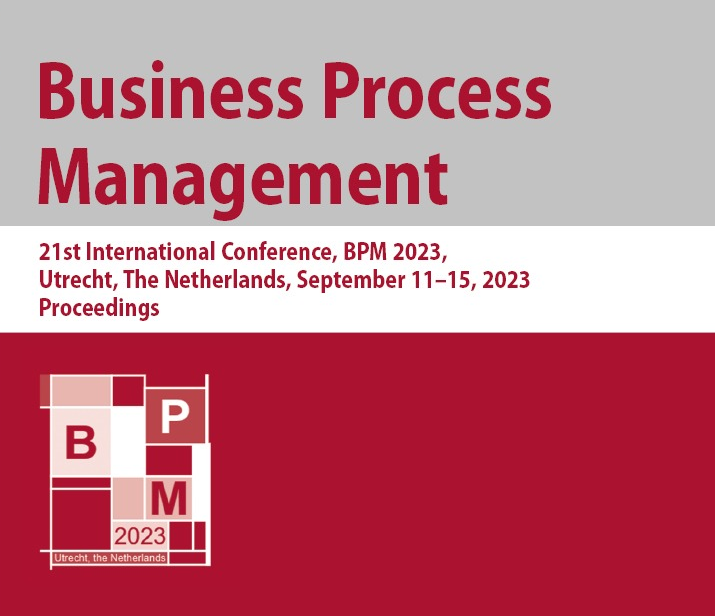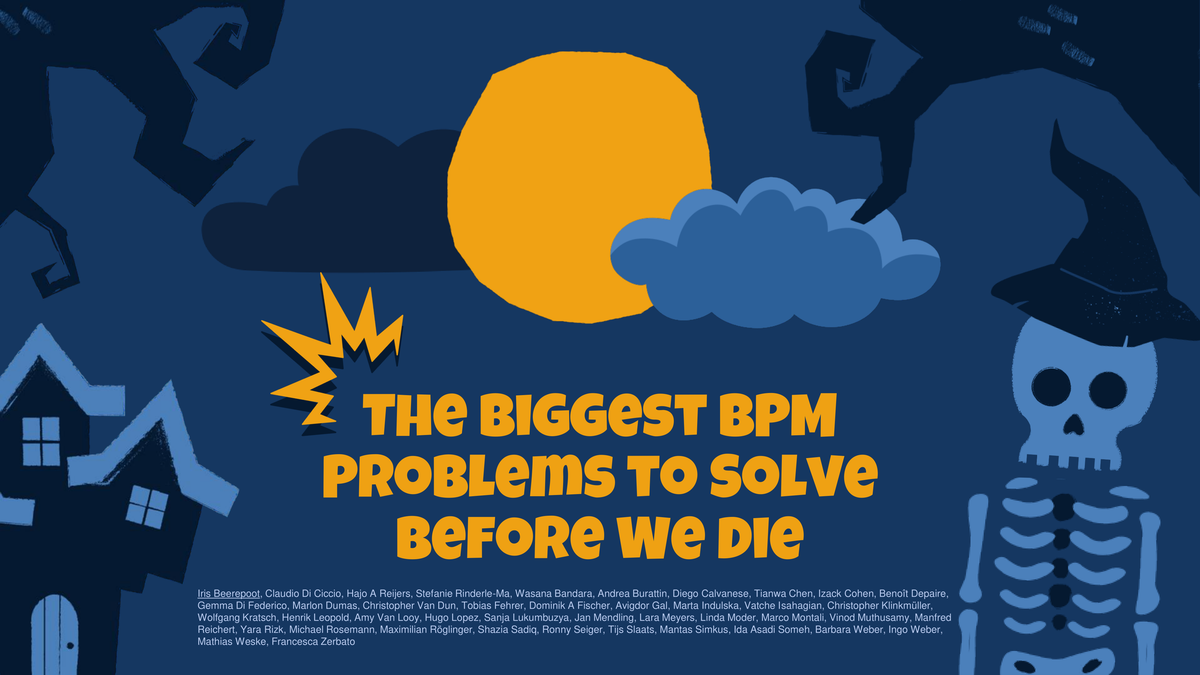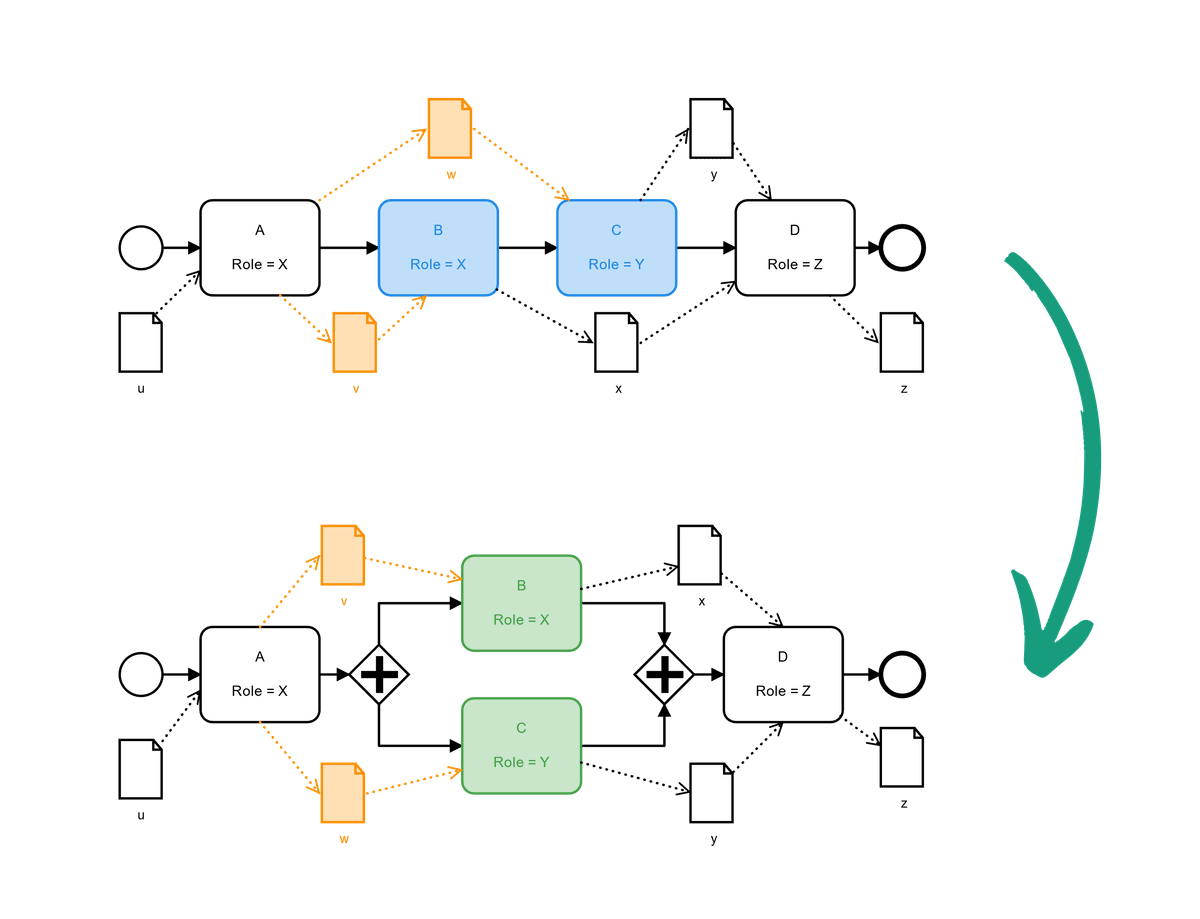Research
Academic references from 20+ years of research on business process improvement.
Goel, K., Fehrer, T., Röglinger, M., & Wynn, M. T. (2023). Not Here, But There: Human Resource Allocation Patterns. In Lecture Notes in Computer Science (pp. 377–394).

Not Here, But There: Human-centric Process Redesign Patterns
Fifteen patterns for putting human resources first.
The paper introduces 15 human resource allocation patterns grouped into five categories—resource capability, utilisation, reorganisation, productivity, and collaboration. These patterns offer structured guidance for assigning people to tasks, taking into account performance considerations like time, cost, quality, and flexibility. The patterns are derived from a two-phase approach involving literature review and expert interviews.
Read moreBeerepoot, I., Di Ciccio, C., Reijers, H. A., Rinderle-Ma, S., Bandara, W., Burattin, A., Calvanese, D., Chen, T., Cohen, I., Depaire, B., Di Federico, G., Dumas, M., van Dun, C., Fehrer, T., Fischer, D. A., Gal, A., Indulska, M., Isahagian, V., Klinkmüller, C., … Zerbato, F. (2023). The biggest business process management problems to solve before we die. Computers in Industry, 146, 103837

The biggest business process management problems to solve before we die
This paper outlines nine major research challenges in BPM, collected through an open call and refined via workshops.
Each problem is detailed with its merits for investigation, providing a valuable resource for scholars seeking innovative ideas for analyzing, designing, and managing work processes using information technology. The goal is to inspire beyond incremental extensions and address grand challenges in the field.
Read moreLashkevich, K., Mediavilla Ponce, L. M., Camargo, M., Milani, F., & Dumas, M. (2023). Discovery of Improvement Opportunities in Knock-Out Checks of Business Processes. RCIS 2023
Automated Knock-Out Checks with Process Mining
The study presents an interpretable process mining approach to identify improvements, reduce waste, and suggest redesigns in knock-out check processes.
This paper introduces a process mining approach to identify improvement opportunities and mitigate overprocessing waste in processes containing knock-out checks. It discovers knock-out checks, decision rules, dependencies, and calculates time waste, while suggesting process redesigns. Evaluated against a baseline model using synthetic and real-life event logs, the approach maintained similar accuracy but improved interpretability. Despite promising results, the authors acknowledged potential limitations related to dataset variety and the practical implications of the discovered accuracy.
Read moreFehrer, T., Fischer, D. A., Leemans, S. J. J., Röglinger, M., & Wynn, M. T. (2022). An assisted approach to business process redesign. Decision Support Systems

Assisted business process redesign
A semi-automated approach for process improvement based based on process data, best practices and simulation
In practice, BPM experts often work together with information carriers to find ideas for process improvements. In this knowledge-intensive process, methodological and domain knowledge must be creatively linked. However, the combination of knowledge and creativity is often not given in workshops. This assisted approach therefore provides recommendations for improvements that are iteratively and partially automated implemented into the process. Simulations help to assess the impact of the process improvements.
Read moreFrank, L., Poll, R., Röglinger, M., & Lea, R. (2020). Design heuristics for customer-centric business processes. Business Process Management Journal, 26(6)
Design heuristics for customer-centric business processes
This paper presents 15 design heuristics for creating customer-centric business processes, a largely unaddressed area in traditional efficiency-focused process design.
Derived from a literature review and analysis of customer-centric companies, and refined by expert feedback, these heuristics are organized based on their expected impact on interaction capabilities.
Read more